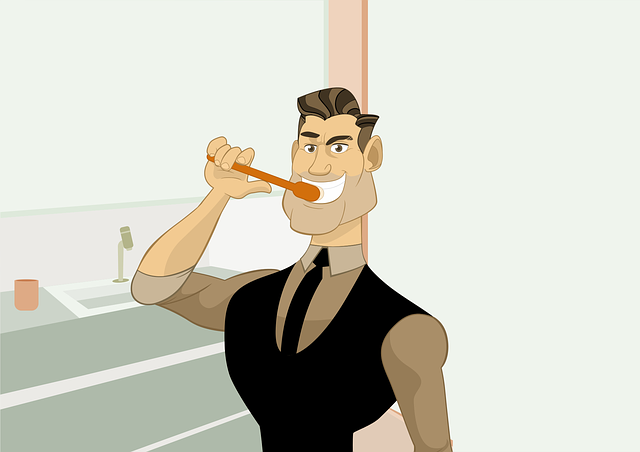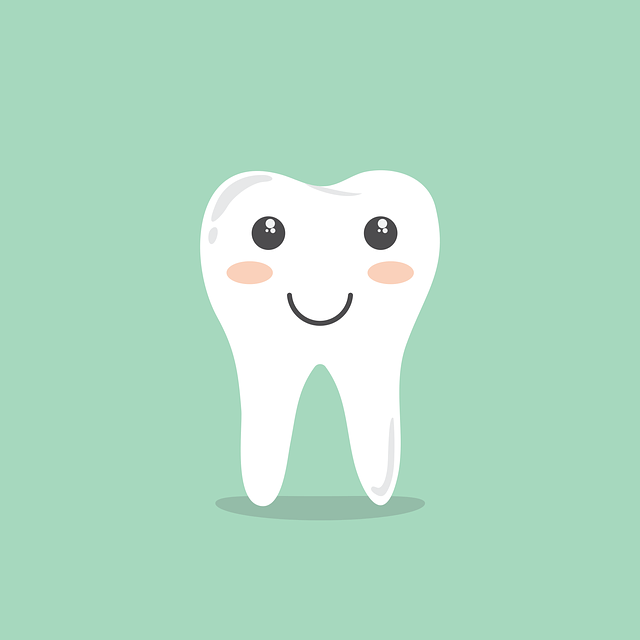Retainer Maintenance: How to Adjust Retainer
Welcome to the world of retainer maintenance, where we unravel the secrets to keeping your smile in perfect alignment. Ah, retainers – those trusty companions that ensure your teeth stay in their rightful place, long after your braces have bid farewell. But what happens when your retainer starts feeling a little snug or loose? Fear not, for we are here to guide you through the intricate art of adjusting retainers. Armed with knowledge and confidence, you’ll soon be equipped to tweak your retainer like a pro, ensuring that your pearly whites remain beautifully aligned for years to come. So, let’s delve into the world of retainer maintenance and demystify the art of making precise adjustments.
1. Understanding the Importance of Retainer Maintenance: Preserving Your Orthodontic Results
Retainer maintenance is a crucial aspect of preserving the results achieved through orthodontic treatment. After investing time and effort into achieving a straight and healthy smile, it is essential to maintain these results for the long term. By understanding the importance of retainer maintenance, you can ensure that your orthodontic journey continues to be successful.
Here are a few key reasons why retainer maintenance should be a top priority:
- Stability: Wearing your retainer as recommended by your orthodontist helps stabilize the teeth in their new positions. This is essential because, after the braces are removed, there is a natural tendency for the teeth to shift back to their original alignment. Consistent retainer wear prevents this regression and maintains the desired results.
- Preventing relapse: Orthodontic relapse refers to the teeth moving back to their pre-treatment positions. By diligently following your retainer maintenance routine, you can significantly reduce the risk of relapse. Remember, prevention is key in maintaining your orthodontic results.
- Protecting your investment: Orthodontic treatment involves a significant investment of time and money. By prioritizing retainer maintenance, you are safeguarding this investment. Neglecting proper retainer care could result in the need for additional orthodontic treatment in the future, which can be costly.
By understanding the importance of retainer maintenance and committing to a consistent routine, you can preserve your orthodontic results and enjoy the benefits of a beautiful smile for years to come.

2. A Step-by-Step Guide to Adjusting Your Retainer: Ensuring a Proper Fit
Adjusting your retainer is an essential step in ensuring a proper fit and maintaining the alignment of your teeth. Follow this step-by-step guide to make the necessary adjustments:
1. Inspect the retainer: Carefully examine your retainer to check for any signs of damage or wear. Look for cracks, breaks, or loose wires. If you notice any issues, contact your orthodontist for assistance.
2. Rinse with warm water: Before making any adjustments, rinse your retainer with warm water to remove any debris or bacteria that may have accumulated.
3. Start with the front teeth: If your retainer feels too tight, gently push the front wire away from the front teeth using your fingers. Take it slow and make small adjustments to avoid overcorrecting.
4. Adjust the wire loops: If the wire loops at the back of your retainer are digging into your gums, use a pair of pliers to carefully bend them outward. This will provide a more comfortable fit.
5. Check the fit: After each adjustment, try on your retainer to assess the fit. It should feel snug but not excessively tight. Take note of any areas that still feel uncomfortable or require further adjustment.
6. Seek professional help if needed: If you are uncertain about making adjustments on your own or if your retainer continues to feel uncomfortable after several attempts, schedule an appointment with your orthodontist. They will be able to make the necessary adjustments and ensure a proper fit.
By following these steps, you can confidently adjust your retainer and ensure it provides the necessary support to maintain your beautiful smile.

3. Essential Tools and Techniques for Retainer Maintenance: Keeping Your Smile Aligned
Essential Tools for Retainer Maintenance:
Maintaining a properly aligned smile requires consistent care and attention. To ensure your retainer serves its purpose effectively, it’s important to have the right tools at hand. Here are some essential tools you’ll need for retainer maintenance:
- A soft-bristled toothbrush: Using a soft-bristled toothbrush is crucial to avoid damaging your retainer. Gently brush your retainer daily to remove any plaque or debris that may accumulate.
- Denture cleaner or retainer cleaning tablets: These specially formulated cleaning agents are designed to effectively remove stains, odor, and bacteria from your retainer. Follow the instructions provided to safely clean your retainer.
- A retainer case: A sturdy and hygienic case is essential for storing your retainer when not in use. This will prevent damage or loss and keep your retainer clean and safe.
Techniques for Retainer Maintenance:
To maintain a properly aligned smile, it’s not just about having the right tools – it’s also about using the correct techniques. Here are some techniques to help you effectively maintain your retainer:
- Brushing and rinsing: Brush your retainer daily using a soft-bristled toothbrush and rinse it thoroughly with water after each meal. This will help remove food particles and prevent bacterial growth.
- Avoiding heat: Keep your retainer away from sources of heat, as high temperatures can distort its shape. Avoid leaving it in direct sunlight, hot water, or near any heat-emitting devices.
- Regular check-ups: Visit your orthodontist regularly to ensure your retainer fits properly and is in good condition. They can make any necessary adjustments and provide expert guidance on retainer maintenance.

4. Common Signs that Your Retainer Needs Adjustment: Identifying Potential Issues
Once you get your retainer, it’s essential to keep an eye out for any signs that it may need adjustment. Identifying potential issues early on can help prevent discomfort and ensure that your retainer continues to do its job effectively. Here are some common signs to look out for:
- Looseness: If your retainer feels loose or doesn’t fit snugly against your teeth, it may be a sign that it needs adjustment. This can occur due to changes in your teeth alignment or natural wear and tear over time.
- Pain or discomfort: If you experience any pain or discomfort when wearing your retainer, it’s important to address it promptly. Discomfort can indicate that your retainer isn’t fitting properly or that it may be putting excessive pressure on certain teeth.
- Visible gaps: Take a close look at your teeth when wearing your retainer. If you notice any visible gaps between your teeth and the retainer, it could indicate that adjustment is necessary to ensure proper alignment.
- Difficulty speaking or eating: If you find it challenging to speak clearly or experience difficulty while eating with your retainer in place, it’s a sign that something may be off. Your retainer should not interfere with these everyday activities, so adjustments may be needed.
Remember, it’s important to consult with your orthodontist if you notice any of these signs or have any concerns about the fit or function of your retainer. They will be able to assess the situation and make any necessary adjustments to ensure your retainer continues to provide optimal results.

5. DIY vs. Professional Retainer Adjustments: Making an Informed Decision
When it comes to retainer adjustments, you have two main options: DIY or professional adjustments. Each option has its advantages and disadvantages, so it’s important to make an informed decision based on your specific needs and preferences.
DIY Retainer Adjustments:
- Cost-effective: DIY adjustments can save you money as you won’t need to visit a professional.
- Convenience: You can adjust your retainer at home, eliminating the need for appointments and travel.
- Flexibility: With DIY adjustments, you can make minor tweaks to your retainer whenever necessary.
- Learning experience: Adjusting your own retainer allows you to gain a better understanding of how it works and how to maintain it.
Professional Retainer Adjustments:
- Expertise: Professionals have the knowledge and experience to make precise adjustments that ensure your retainer fits properly.
- Customization: A professional can tailor the adjustments to your unique dental needs, ensuring optimal comfort and effectiveness.
- Thorough examination: During a professional adjustment, your dentist or orthodontist can identify any underlying issues and provide appropriate treatment.
- Long-term results: Professional adjustments can help maintain the longevity of your retainer, reducing the risk of damage or the need for premature replacement.
6. Expert Tips for Retainer Care: Maximizing Longevity and Effectiveness
Retainers play a crucial role in maintaining the alignment and stability of your teeth after orthodontic treatment. To ensure the longevity and effectiveness of your retainer, here are some expert tips:
1. Clean your retainer properly: Regular cleaning is essential to prevent the buildup of bacteria and plaque. Brush your retainer with a soft-bristle toothbrush and mild soap or non-abrasive toothpaste. Avoid using hot water as it can distort the retainer’s shape. Additionally, consider using a retainer cleaner specifically designed for this purpose. Remember to rinse it thoroughly to remove any cleaning agents before wearing it again.
2. Handle with care: Retainers are delicate and can easily bend or break if mishandled. When not in use, store your retainer in its case to protect it from damage. Avoid placing it in pockets or wrapping it in a tissue, as this increases the risk of loss or accidental damage. Furthermore, never use your retainer to open or tear things, as this can cause it to warp or snap. By handling your retainer gently, you can ensure its longevity and maintain its effectiveness.
7. Maintaining Consistency: Incorporating Retainer Adjustments into Your Oral Hygiene Routine
Incorporating retainer adjustments into your oral hygiene routine is crucial for maintaining consistency and ensuring the long-term effectiveness of your orthodontic treatment. Here are some key tips to help you seamlessly integrate retainer adjustments into your daily oral care:
1. Clean your retainer regularly: Just like brushing your teeth, cleaning your retainer is an essential part of your oral hygiene routine. Use a soft toothbrush and non-abrasive toothpaste to gently scrub away any plaque or buildup on your retainer. Rinse it thoroughly with lukewarm water before placing it back in your mouth.
2. Avoid harmful substances: To preserve the integrity of your retainer, it’s important to avoid exposing it to certain substances. Steer clear of hot water, which can warp the retainer, and avoid using mouthwash or other alcohol-based solutions that may deteriorate the plastic. Additionally, refrain from chewing gum or eating sticky foods while wearing your retainer to prevent it from getting damaged or dislodged.
Frequently Asked Questions
Q: What is a retainer and why is it important to maintain it?
A: A retainer is a removable appliance that is often prescribed after orthodontic treatment to help maintain the alignment of teeth. It is crucial to maintain a retainer to prevent teeth from shifting back to their original positions and to ensure the long-term success of orthodontic treatment.
Q: How often should I wear my retainer?
A: Typically, it is recommended to wear your retainer full-time for the first few months after orthodontic treatment. After that, your orthodontist will advise you on a suitable wear schedule. In most cases, wearing the retainer at night is sufficient to maintain the desired results.
Q: Can I adjust my retainer myself?
A: Although it is not recommended to adjust your retainer yourself, there are certain minor adjustments you can make, such as gently bending the wire if it feels uncomfortable or has become loose. However, it is always best to consult your orthodontist to ensure proper adjustments are made.
Q: What should I do if my retainer becomes loose or uncomfortable?
A: If your retainer becomes loose or uncomfortable, it is important to contact your orthodontist as soon as possible. They will be able to assess the situation and make any necessary adjustments to ensure the retainer fits properly and remains effective.
Q: How should I clean my retainer?
A: To maintain good oral hygiene and keep your retainer clean, it is recommended to brush your retainer with a soft toothbrush and mild soap or non-abrasive toothpaste. Avoid using hot water as it may warp the retainer. Additionally, soaking the retainer in a denture cleaner or a mixture of water and vinegar can help remove any stubborn buildup.
Q: What should I do if I lose or damage my retainer?
A: If you lose or damage your retainer, it is important to contact your orthodontist immediately. They will provide guidance on whether a replacement is necessary and guide you on the best course of action.
Q: How long should I wear my retainer?
A: The duration of retainer wear varies from person to person. In most cases, orthodontists recommend wearing the retainer consistently for the first year after orthodontic treatment. After that, wearing the retainer a few nights a week can help maintain the results.
Q: Are there any foods or activities I should avoid while wearing a retainer?
A: It is advisable to avoid consuming sticky or hard foods that could damage the retainer or cause it to become loose. Additionally, activities such as playing sports that carry a risk of mouth injuries should be approached with caution to prevent any damage to the retainer or your teeth.
Insights and Conclusions
In conclusion, retainer maintenance is an essential aspect of ensuring the effectiveness and longevity of your retainer. By following these simple steps to adjust your retainer, you can maintain its proper fit and avoid any discomfort or potential complications. Remember to consult your orthodontist or dental professional if you encounter any difficulties or have any concerns during the adjustment process. With regular care and attention, your retainer will continue to serve its purpose in maintaining the alignment of your teeth, providing you with a confident and healthy smile for years to come.






